2021 MFA Thesis Exhibition
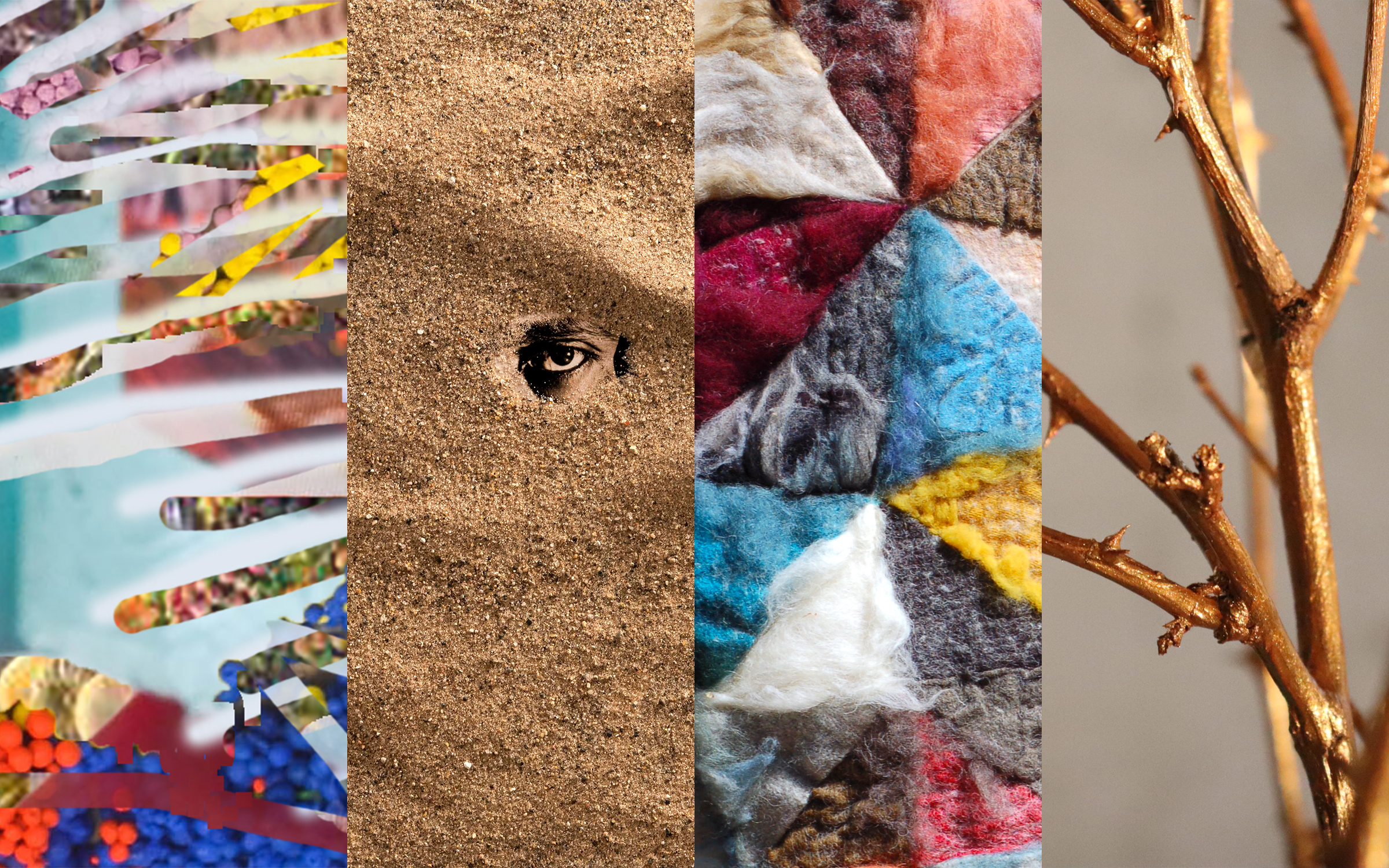
MFA Thesis Exhibition
Megan Bickel, Rachid Tagoulla, Karen Weeks, and Katherine Watts
May 7-July 9, 2021
The Hite Art Institute is excited to announce our annual Summer MFA Thesis Exhibition. Featuring the work of our 2021 MFA graduates, this exhibition is an opportunity to celebrate the accomplishments of our graduates as well as share their work with the community. Please join us on Friday, May 7 from 5-7 pm for an opening reception at the Cressman Center for Visual Arts. Reservations and masks are required and social distancing guidelines will be enforced.
Click Here to make a reservation. For more information on our Covid-19 visitation policies, visit our website here.
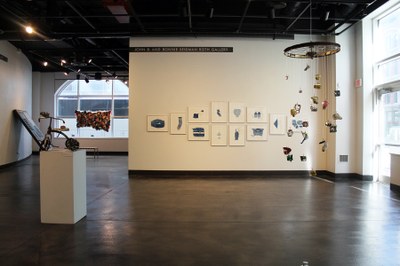 |
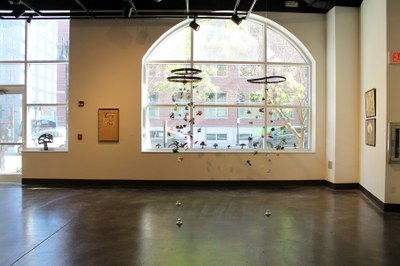 |
 |
|---|---|---|
 |
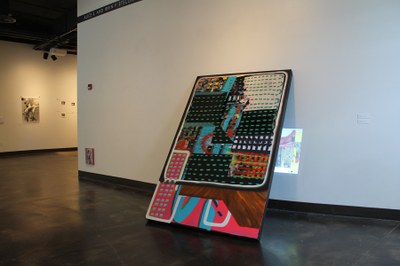 |
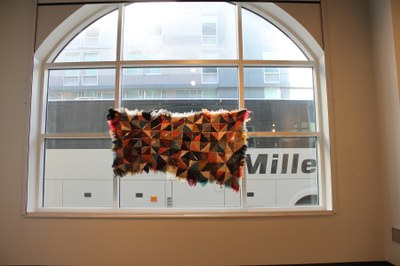 |
Megan Bickel
M Bickel is meditating on two words as they relate to one another in our current moment: illusion and allusion. Specifically, this manifests by inquiring as to how we consume visual data, the probability of factual 'truths,' and cultivating safe, imaginative spaces for the viewer to conceive of ethically superior realities.
Illusion references a trick and has a visual connotation. The illusion is typically used to describe the realistically rendered image, its historical etymology tied to painting — and thus propaganda. On the other hand, an allusion is a literary device and, thus, depends on the viewer's imagination. Interestingly, there appears to be a contradiction in these two similar ideas that display a particular power dynamic between purveyors of visual and purveyors of written information.
Here, the power dynamic that Bickel is referencing can at times appear malignant. Meaning, for the illusion, that there is a historical power to deceive in a way that potentially appears psychologically threatening when considered by the viewer. The evidence of this threat doesn't appear in the allusion because in the act of reading a text, the viewer (or reader) is reliant on their imagination. Thus, all of the conjured imagery or ideas that arise during reading are contingent on what they have consumed prior.
Bickel has a tendency to lack loyalty to subject or material and is instead interested in conceptual misinformation and how that idea can be relayed. Topics that most influence her are those which confront us in the intertwined spectacle of journalism, political science, advertising and propaganda. Using the semiotics of Casualist and Post-Digital Painting, Bickel interacts with painting, textile, digital media, installation, and curation. At times appearing indecisive, she prefers to use surprise and subject appropriate media to offer the audience a summated opportunity to consider misinformation, specifically in the Digital Age.
The exhibition title is an altered quote by Terry Smith, Curator and Theorist (University of Pittsburg), from his essay on art critic and historian, Germano Celant, “Germano Celant: Companion to Art” published in Flash Art in the fall of 2020:
“Faced with an unfathomable future, even the most recent past began to look historical in two opposite senses: as if it were well and truly past, but also full of seeds for a present that could have turned out differently.”
Rachid Tagoulla
Shifting Sands is a re-exploration of the presentation of North Africans in colonial postcards and a critique of the modern Western museum.
Since the inception of photography, colonizers used this medium- especially in the form of postcards- to categorize and exoticize Eastern peoples in order to more easily subjugate them. Shifting Sands is a series of reconstructed colonial postcards which challenges colonial-era stereotypes of North African peoples. The colonial gaze, represented by the camera lens, is subverted through a lensless image-making process in which sand is used to remove the subject from the colonial gaze and create a new visual experience. In manipulating old postcards dated between the late nineteenth and early twentieth century, Shifting Sands challenges viewers to unsee what they are conditioned to see. This series is a visual experiment of an Eastern photographer trying to portray his culture without reinforcing colonial perspectives and exotic stereotypes. Shifting Sands stands to challenge deeply rooted stereotypes rather than reinforce them or profit from perpetuating them. The show is multi-disciplinary and takes form of an interactive outreach, visitors are encouraged to participate in the artist’s image-making process in a performative way.
This work re-envisages the experience of the Western museums today in order to demonstrate the relationship between art, artifacts and commodities and also brings attention to how colonial objectification of North Africans continues in the form of the modern-day museums.
Karen Weeks
If the home can be a metaphor for our own interiors, then the things that collect there can be similarly thought of, performing as punctuated moments within that interior, giving it shape, creating contours. Within the domestic setting, macro social forces such as global capitalism as well as the more immediate experience of meeting our children’s demands can push and pull us, equally informing the experience of being in the home. Love Labor: Literal Symbols and True Abstractions is comprised of images sourced from common ephemera of the home meant to represent the everyday: notes, discarded letters, open envelopes, unfinished knitting, garments, drawings, math homework. The works in this show seek to reimage this detritus by (re)organizing it into constructed passages that bear witness to the commonalities to be found in homemaking and artmaking, aesthetics and the commonplace, economics and whining. They are abstract representations of that which is contained within us, by way of what collects in our homes, representations of the aesthetics of and the profundities contained within the mundane.
Katherine Watts
I employ various techniques such as printmaking, photography, videography, music and sculpture. I incorporate foraged Ohio River bank findings, which are then reassembled in unexpected ways. While there is an innate, accompanied romanticism and beauty associated with these objects, there is also a sense of regeneration and urgency.
My overarching intention is to create a polyphony of work that focuses on nature, memories, observation and abstraction. My hope is that the work evokes a kind of personal internal awareness of the ubiquitous relationship between nature and humans, so that the viewer's introspective questioning of this relationship can ensue.
Instead of simply presenting such realities, the implied Derridean approach to their complexity and instability might be better served by deconstruction; to attempt to discover the meanings within them. My intention is to accomplish this while retaining the sources of the relationship of abiding beauty and confliction. For more information please visit: katherinewattsart.com

 Instagram
Instagram Facebook
Facebook Pinterest
Pinterest Twitter
Twitter